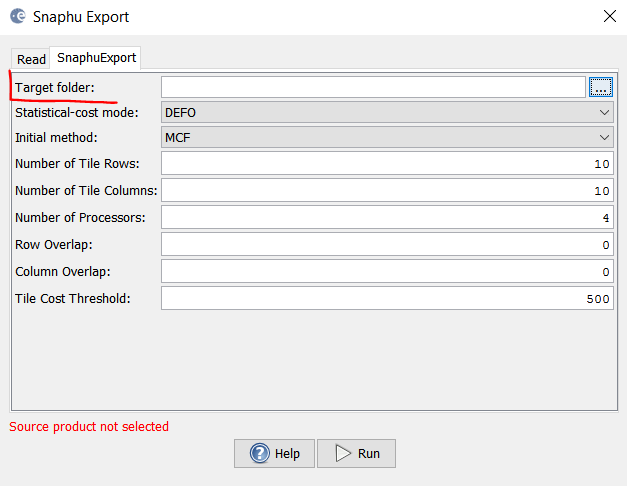So, How can I increase the accuracy of co registration? Where can I see the accuracy of co registration? Is there any other software which can process the sentinel images?
I edited the previous post please take a look at it once more,
Hi Amighpey,
I found this might be it is interesting for you, please take a look,
The remaining major difference between Sentinel-1 TOPS data
and stripmap data is that the any imprecision of less than one thousandth
of one pixel in co-registration (e.g. equivalent to 2 cm in
azimuth) may result in noticeable phase ramps on individual bursts
(De Zan et al., 2014).
Hi
Many thanks, so my question is remained:
How can I increase the accuracy of co registration? Where can I see the accuracy of co registration? Is there any other software (other than S1tbx) which can process the sentinel images?
Regards,
you can increase the number of GCPs for the coregistration. This could lead to better results at some locations. Also try to use a second order polyonomial and trucated sinc interpolation. These things won’t increase the overall quality of the data but baybe lead to smaller improvements.
Maybe you also try also increasing the window sizes.
Hi,
Would you please to take a look at this “Sentinel-1 IWS mode support in the GAMMA Software”
Hi
How about the GMT SAR software? Is its results better? Is there any one who have experience with GMT SAR?
Regards
Seems powerful software. But for “Windows person” is hard to discover again words like terminal, scripting, no gui, install and compilation bugs 
I’d love to use GMT SAR as well, especially as an addition to SNAP. But by now I found it hard to compile all parts under Windows. The installation manual is good, but there are some cases which may not be covered and I didn’t manage to get it to work.
If someone has more experience I would be greatful for a short message.
Hello Ms amighpey
In addition to deburst problem, It worth’s to mention that:
phase unwrapping with snaphu sometimes result phase jumps due to using tiling option.
I suggest that use a subset of image, then apply phase unwrapping with no tiling option(tile number=0 for row and column).
Best regards
Sayed Javad Adabikhosh
Hello!
I need some help guys!
So these are my results… as you can see the unwrapped phase has no sense…
I used DEFO, because I am looking for deformations and they are visible when you look at the phase image.
DO you have any idea why I get this result after unwrapping? Or where is my mistake… I used the graph deformation-pre-proccesing.
Thank you,
Alex
Hi Alex,
Would you please to reframe your question
Hi! So I want to see the surface displacement after an earthquake. I used SNAP. I used 2 IW images. I split the images, deburst them and after that merge them. After that I use the graph deformation-pre-processing (orrbit correction, stacking, cross-correlation, warp, topo phase removal (I used the 1sec SRTM) and the golstein phase filtering). After this process I obtained the left image (this is just a subset). After that I used Snaphu export with the statistical cost mode DEFO. After I used a virtual machine with linux so I can run snaphu. The result you can see it in the right image. And now I look at the 2 images and I see that something is wrong and I don’t know where the mistake is. In the center of the left image you can see the epicenter of the earthquake, so that image I think is ok, but the unwrapping is for sure wrong. Do you know what I did wrong in this process?
Regards
Also try to play with the parameters
The images have the same track… and I couldn’t find SM images for the dates I used or around that dates.
Thank you for the suggestion, i will try these steps.
Thank you!
I’m beginner in InSAR.
I’d unwrapping the phase using the SNAPHY algorithm (using windows).
basing on the Sentinel-1 Toolbox tutorial, I should find snaphu.conf file in the the folder /mnt/hgfs/ .
I don’t find it!!
help? thank you
snaphu.conf is created when you export the phase with SAR > Interferometric > Unwrapping > SNAPHU export.
It can be found at the location you choose as a target folder:

If you are using the VMWare image in the tutorial, you need to setup the shared folder. In VMWare player, go to edit virtual machine settings and then options. From there setup a new shared folder. Put the data you export from SNAP into this shared folder and then in the linux virtual machine, you will see the data files in /mnt/hgfs/
yess, it works !! thank you
